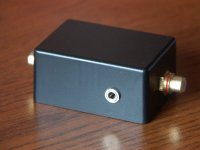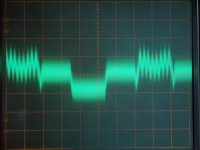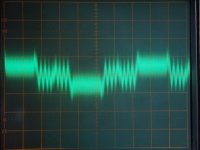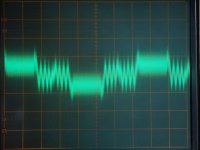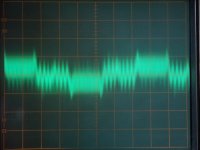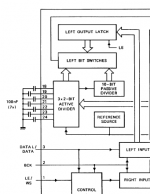AndrewT said:Does the "look" correlate with the sound heard?
Hi,Originally posted by Bernhard yes
If the sound does depend on how these very low level bits look like then your different DACs should sound different when reproducing those LSB squarewaves.
Go on, listen to them after the +40db gain stage. Tell how different they sound.
Do you need a 2bit signal to allow differentiation in the sound from the different DACs? or even more bits? Tell us what is audible.
If this same test were done with 20bit signals/DACs, how many bits would need to be used to allow differentiation in DAC performance at the LSB or slightly above level?
In both oshifis and my measurements it looks like some bits are not stable = oscillating or ringing, maybe it has to do something with the DEM.
oshifis said:
Each step is 16 samples
And each corrupted step ( bit ) includes exactly 16 spikes. 🙂
I am not sure about this. I will check the tracks with Waveditor, but each level has 16 identical HEX values, so the problem must be somewhere in the chip. It would be good to know more about the internals of this DAC, especially the active dividers that SoNic_real_one refers to. I will also disable the DEM clock just to see what happens.Bernhard said:And each corrupted step ( bit ) includes exactly 16 spikes. 🙂
TDA 1541 is an antique piece of... hardware. In my opinion it doesn't deserve the hype that surrounds it.
PS: I have a CD player based on it that has also a SPDIF conection and I can have an ideea of how good of a job does.
PS: I have a CD player based on it that has also a SPDIF conection and I can have an ideea of how good of a job does.
I measured several TDA1541 and 1541A and they all behave differently. The strange distortion seen on Post #24 occurs at different tracks/bits on every sample of DAC chip. I have suspect that it is somehow related to the DEM clock. Now the task is to find a sample that shows the waveform seen on Post #23 at each bit...
oshifis said:Now the task is to find a sample that shows the waveform seen on Post #23 at each bit...
Remember: Every TDA 1541 has two channels

Yeah, but both channels behave identically on every DAC I measured so far...
One question: I have some TDA1541As, that I think are fake. The text on them is not painted white, but engraved (I think with laser, very thin lines). The wide bar at the left is made of many parallel thin lines. Also the letter A is shifted up a bit. The code is 41073 and HSH0201 5. There surface seems sandpapered.... I have another four original from a Cambridge Audio CD-3, I will measure all of them in the weekend.
One question: I have some TDA1541As, that I think are fake. The text on them is not painted white, but engraved (I think with laser, very thin lines). The wide bar at the left is made of many parallel thin lines. Also the letter A is shifted up a bit. The code is 41073 and HSH0201 5. There surface seems sandpapered.... I have another four original from a Cambridge Audio CD-3, I will measure all of them in the weekend.
...interesting. I know that the linearity is always different on both channels, but maybe those artefacts are in common...
This is a really interesting thread!
I think JockoHomo at diyhifi.org is a digital buff guy. If you go ask there nicely, he might have some interesting info.
Keep going!
I think JockoHomo at diyhifi.org is a digital buff guy. If you go ask there nicely, he might have some interesting info.
Keep going!
Hm, I found some interesting: I replaced the SAA7220P/B in my test Marantz CD-94 to a SAA7220P/A and the waveform of Post #24 moved from Track 3 to Track 2. In general, most bits up to bit 9 are nearly perfect with the B version. Bit 10 to bit 15 looks like Post #25, 26 and 27.
And this is identical with every TDA1541A chip I tried so far (maybe there are some minor level differences, difficult to read off the scope)...
I tried this also on a Marantz CD-74 modified to NOS and digital filter bypassed. Here most bits are perfect or nearly perfect, except bit 9 which shows some oscillation-like noise on the bottom level, but not serious. Another reason for NOS?
And this is identical with every TDA1541A chip I tried so far (maybe there are some minor level differences, difficult to read off the scope)...
I tried this also on a Marantz CD-74 modified to NOS and digital filter bypassed. Here most bits are perfect or nearly perfect, except bit 9 which shows some oscillation-like noise on the bottom level, but not serious. Another reason for NOS?
you can't really compare an obsolete DF filterchip with DSP oversampling/resampling solution like Anagram 
http://www.anagramtech.com/technology/q5-upsampling/

http://www.anagramtech.com/technology/q5-upsampling/
- Home
- Source & Line
- Digital Source
- DAC linearity test CD
